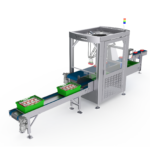The oil and gas industry is massive and highly-diversified in its operational characteristics between the upstream, mid-stream and downstream sectors of the industry. Even within each sector, there are distinct differences; offshore gas/oil rigs have a completely different set of requirements to onshore well pads in the fracking industry. However, every sector is susceptible to the boom and bust cycles that have traditionally characterized the oil and gas industry. All of this makes oil and gas ideal for adopting IoT technologies to address a whole range of problems and risks, and to smooth out the ups and downs of the business cycle.
Where are Oil and Gas Companies Today with Edge Computing Adoption?
Stratus attended the IoT in Oil & Gas conference in Houston, TX, and it provided an interesting snapshot of where oil and gas is, relative to a lot of the hype that exists around IoT as whole. If there is one common thread, it is that implementing IoT and analytics is a journey, not a project. It involves technology, but above all, people and processes. This was admirably illustrated by Marathon Oil, who described their three-year journey to implement digital oil field automation.
The Role of the Cloud and the Edge
Getting the data from the source to the cloud was a subject of great interest. There was universal agreement that the cloud is the place to conduct deep analytics, particularly where machine learning and artificial intelligence technologies can best be deployed. However, transporting the data from the edge to the cloud has its challenges. About 75% of the end users presenting indicated they were either deploying, testing or evaluating the use of edge computing to streamline their cloud-based analytics. They looked to Edge Computing to help with oil and gas tasks such as collecting data from a single site (e.g. an offshore rig, well pad, compression station or processing plant) to limit the number of connections to a cloud. This is particularly important in oil and gas, where there are many remote locations.
The use of edge computing for real-time analytics where latency and round-trip delay would make a cloud-based approach unfeasible was also seen as an important application. There was also discussion about using edge computing to filter and normalize data before sending it to the cloud. This can significantly decrease bandwidth usage and significantly reduce the computing cost in the cloud.
The panel discussion I participated in wasn’t so much about advancements in the cloud, but really focused more on the relationship between the cloud and the edge. We also explored the idea of deploying machine learning algorithms to the edge. The “learning” part would occur in the cloud while the algorithmic implementation would be local, enabling scalability and continuous updates as new and improved algorithms are learned.
There was universal agreement that edge computing will play a key role in the evolution of IoT deployments in the oil and gas industry. As the data becomes increasingly important to drive business decisions, its value will increase exponentially. Ultimately, being able to capture, store and process data locally with simple, protected and autonomous devices will become critical.
The Edge Roadmap
In summary, it is clear that we are in the early stages of IoT deployments and five years in, at least from this conference perspective, everyone is still on a steep learning curve. In Stratus’ recent Edge Computing Trend Report, the primary barrier to edge adoption was lack of education on if, when and how to use edge technology and applications. So if you are in the early stages and just starting to think about the IoT journey and whether edge computing can help, you are not alone.








